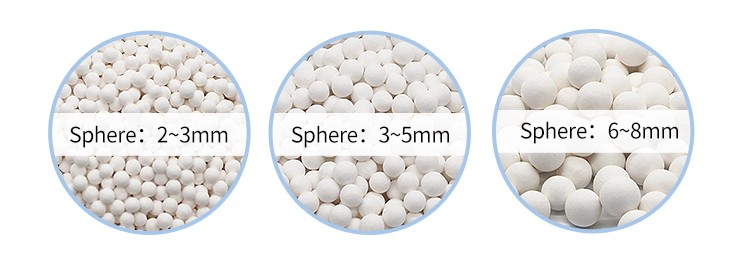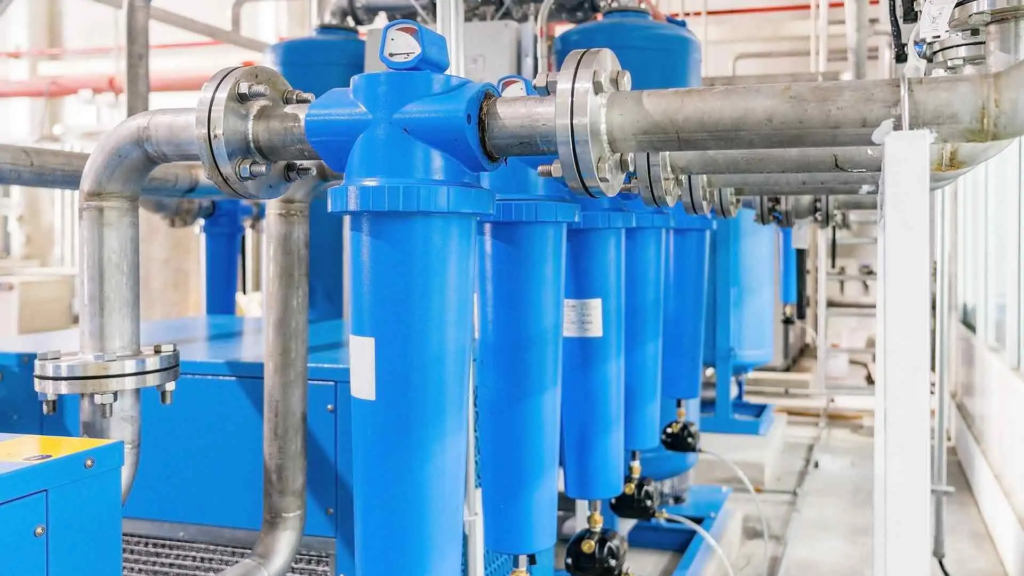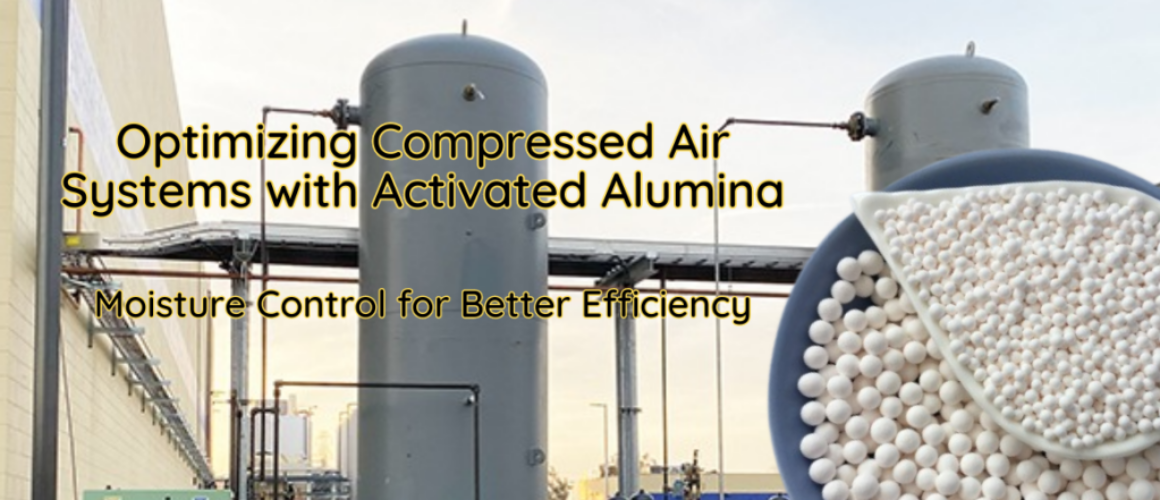Optimizing Compressed Air Systems with Activated Alumina: Moisture Control for Better Efficiency
| Key Aspect | Details |
|---|---|
| Compressed Air Systems | Systems that use compressed air to power industrial processes, requiring efficient moisture control for optimal performance. |
| Activated Alumina Moisture Control | Activated alumina effectively adsorbs moisture from compressed air, preventing damage and maintaining system efficiency. |
| Benefits of Activated Alumina | Reusable, chemically stable, and highly efficient in moisture adsorption, making it a cost-effective solution for air drying. |
| Applications | Used in compressed air systems, gas dehydration, water filtration, and air purification. |
Table Of Contents
“Moisture may seem trivial, but in compressed air systems, it can be the silent destroyer—causing rust, contamination, and reduced performance.”
Introduction
If you’ve ever struggled with moisture wreaking havoc on your compressed air systems, you’re not alone. Moisture in compressed air systems can lead to severe complications—rust, contamination, and equipment breakdown are just the beginning. Activated alumina provides an effective solution to this persistent problem by acting as a desiccant that efficiently removes moisture. Moisture control isn’t just about preventing damage; it’s about boosting efficiency, cutting maintenance costs, and ensuring the longevity of compressed air systems.
In this post, we’ll explore how moisture control with activated alumina can optimize compressed air systems, improve performance, and reduce downtime. By understanding the challenges of moisture in compressed air and the benefits of using activated alumina, you’ll see how it can transform your operations and ensure efficiency across your processes.

What Is a Compressed Air System?
Compressed air systems are the essential components of many industrial operations, powering everything from tools to automation. These systems provide pressurized air to drive various industrial applications—whether it’s pneumatic tools, material transport, or machinery control, compressed air is integral to many industrial functions. However, like any superhero, compressed air systems have a vulnerability, and that vulnerability is moisture.
Compressed Air Systems
| Component | Description |
|---|---|
| Compressor | Device that pressurizes air for industrial use. |
| Air Dryer | Removes moisture from the compressed air to prevent damage and ensure system efficiency. |
| Activated Alumina | Adsorbent used to control moisture, improving compressed air quality and protecting equipment. |
| Distribution Piping | Network of pipes used to transport compressed air to various points of use. |
Moisture in compressed air systems can lead to corrosion, blockages, and contamination, causing significant inefficiencies. As compressed air is cooled during the compression process, moisture condenses, and if left uncontrolled, it can compromise the quality of the air and damage components. That’s where moisture control becomes essential—ensuring that air quality is maintained, and the system remains effective and reliable.
Why Moisture Is a Problem in Compressed Air Systems
Moisture might seem harmless, but in compressed air systems, it can spell disaster. When moisture infiltrates a compressed air system, it can corrode pipelines, damage tools, and even contaminate end products. This can be especially problematic in industries that require precise control over air quality, such as food processing or pharmaceuticals. Rust caused by moisture can weaken the entire infrastructure, leading to expensive maintenance or even complete system failure.

In addition to physical damage, moisture in compressed air also leads to reduced efficiency. Moisture reduces the overall performance of air-powered tools and machinery, resulting in higher energy consumption and lower productivity. By implementing proper drying technologies, such as moisture adsorption using activated alumina, these problems can be mitigated effectively, ensuring the system remains functional and cost-efficient.
Why Moisture Is a Problem in Compressed Air Systems
| Problem Caused by Moisture | Impact |
|---|---|
| Corrosion | Moisture leads to rust, weakening infrastructure and causing leaks. |
| Contamination | Moisture can introduce contaminants, affecting product quality in industries like food. |
| Reduced Efficiency | Moisture affects tool performance, increasing energy consumption and operational costs. |
How Activated Alumina Works for Moisture Control
The key to moisture control in compressed air systems lies in activated alumina’s unique properties. Activated alumina is a highly porous substance made from aluminum oxide, specifically processed to create an extensive surface area with numerous small pores. These pores give activated alumina a powerful adsorption capability, allowing it to trap water molecules effectively and remove moisture from compressed air.
Activated alumina acts as a desiccant in moisture control systems. During the adsorption process, water molecules adhere to the surface of the alumina granules, leaving the compressed air dry and suitable for industrial applications. One of the standout benefits of using activated alumina is its reusability—once saturated, it can be regenerated through heating, releasing the trapped moisture and allowing it to be used again, making it both an efficient and cost-effective choice for moisture control.
How Activated Alumina Works for Moisture Control
| Property | Function |
|---|---|
| Porous Structure | Provides a large surface area for effective moisture adsorption. |
| Adsorption Process | Water molecules cling to the surface, effectively drying the compressed air. |
| Reusability | Can be regenerated through heating, making it a sustainable option for moisture control. |
Advantages of Using Activated Alumina in Compressed Air Systems
Activated alumina offers some unique advantages when it comes to keeping compressed air dry. Its high moisture adsorption capacity means it can remove significant quantities of water from compressed air, ensuring the quality of the air and preventing corrosion or contamination. This is particularly valuable in industries where compressed air is critical for operational efficiency, as it helps maintain both equipment integrity and product quality.
Another advantage is the chemical stability of activated alumina, making it safe for use in air quality management. It remains effective in harsh environments without degrading, which means it won’t contaminate the air or compromise system safety. Furthermore, its ability to be regenerated through heating adds to its cost-effectiveness, as it can be used multiple times before replacement is necessary. These benefits make activated alumina a highly suitable desiccant for industrial drying solutions.
Advantages of Using Activated Alumina in Compressed Air Systems
| Advantage | Explanation |
|---|---|
| High Adsorption Capacity | Effectively removes moisture from compressed air, ensuring high air quality. |
| Chemical Stability | Remains effective in harsh environments, ensuring consistent air quality without degradation. |
| Cost-Effectiveness | Reusable through regeneration, which reduces operational costs over time. |
Applications of Activated Alumina Beyond Compressed Air Systems
Activated alumina isn’t just for compressed air—it’s a versatile powerhouse across many industries. Beyond compressed air drying, it is extensively used for gas dehydration, ensuring that gases are free from moisture, which is crucial in applications like natural gas processing. In water filtration, activated alumina effectively removes impurities such as fluoride, providing clean and safe drinking water.
Additionally, activated alumina is used in air treatment and air purification systems, ensuring the air quality is maintained in sensitive environments such as hospitals and clean rooms. Its versatility as an industrial desiccant makes it an invaluable component across various sectors, highlighting its adaptability and efficiency in moisture control applications far beyond compressed air systems.
Applications of Activated Alumina Beyond Compressed Air Systems
| Industry | Application |
|---|---|
| Gas Dehydration | Removes moisture from gases to ensure their quality in processes like natural gas treatment. |
| Water Filtration | Adsorbs impurities such as fluoride to provide clean drinking water. |
| Air Purification | Ensures clean air in environments like hospitals by removing moisture and contaminants. |
Real-World Example: Activated Alumina in Action
“By integrating activated alumina into our moisture control systems, we turned a costly operational problem into a streamlined process, dramatically reducing downtime and enhancing productivity.”
Let me share a story about activated alumina and how it saved an industrial operation from costly downtime. A manufacturing plant I worked with had been experiencing frequent equipment failures due to moisture in their compressed air system. The moisture led to rust in their pipelines, causing blockages and ultimately stopping production for hours at a time. They needed a reliable solution to tackle the root of the problem—excess moisture.
We implemented an activated alumina-based moisture control system, which adsorbed the moisture before it could enter the equipment. The results were impressive: within weeks, the instances of equipment failure dropped significantly, and the plant’s production efficiency improved. The key takeaway from this experience is that investing in moisture control not only prevents damage but also enhances operational efficiency, reducing unplanned downtime and improving overall productivity.
In one of my projects, moisture was wreaking havoc on a compressed air system, causing repeated downtime. Rust in the lines and inefficiencies in equipment were frequent issues. I chose activated alumina due to its high adsorption capacity and reusability, which ultimately solved these problems, significantly improving system reliability and reducing unplanned downtime.
Tips for Maintaining an Efficient Moisture Control System
Even the best equipment needs a little TLC to keep things running smoothly. To ensure your compressed air system remains efficient, it’s crucial to maintain the activated alumina desiccant properly. This means regularly monitoring the moisture levels in the compressed air and regenerating the desiccant as needed. Regeneration involves heating the activated alumina to release the adsorbed moisture, allowing it to regain its effectiveness.
It’s also essential to check the flow rate and temperature of the air entering the desiccant bed. If the flow rate is too high or the temperature is not optimal, the adsorption process may not be as effective. By keeping an eye on these factors and conducting regular maintenance, you can optimize the performance of your moisture control system and ensure the longevity of your compressed air systems.
One of the major challenges I faced was ensuring consistent regeneration of activated alumina without disrupting operations. By implementing a scheduled maintenance routine and training the staff on optimal regeneration practices, we managed to keep moisture levels under control, thus improving the overall efficiency of the compressed air system.
Frequently Asked Questions
What is the role of activated alumina in optimizing compressed air systems?
Activated alumina helps optimize compressed air systems by adsorbing moisture, ensuring the air remains dry, and protecting the system from damage, corrosion, and inefficiencies.
How does moisture affect compressed air systems?
Moisture in compressed air systems can cause rust, contamination, and blockages, leading to equipment failure and reduced system efficiency, which can negatively impact industrial processes.
Why is moisture adsorption important in compressed air drying?
Moisture adsorption is essential because it removes water from the air, preventing corrosion, maintaining air quality, and ensuring the reliability of compressed air systems.
How does the adsorption process work in activated alumina?
In activated alumina, water molecules are attracted and held on the surface of the alumina granules due to its porous structure, effectively removing moisture from the air.
What are the benefits of using activated alumina desiccant in industrial air treatment?
Activated alumina desiccant provides high moisture adsorption capacity, chemical stability, and reusability, making it ideal for effective and cost-efficient industrial air treatment.
How often should the activated alumina be regenerated in compressed air systems?
The frequency of regeneration depends on the moisture load and usage; generally, it needs to be regenerated whenever it becomes saturated to maintain effectiveness.
What are the applications of activated alumina beyond compressed air systems?
Activated alumina is used in gas dehydration, water filtration, air purification, and other industrial applications where moisture control and air quality management are critical.
How does activated alumina improve air quality management?
Activated alumina adsorbs moisture and impurities, keeping compressed air dry and clean, which helps maintain overall air quality in industrial systems.
What is the impact of moisture on air compressor efficiency?
Moisture in air compressors can reduce efficiency, cause rust, and damage components, leading to increased energy consumption and maintenance costs.
How does using activated alumina affect energy efficiency in air systems?
Using activated alumina to keep compressed air dry helps maintain system efficiency, reducing the energy required to operate air-powered tools and minimizing energy losses.
What makes activated alumina a suitable desiccant for gas dehydration?
Activated alumina’s high adsorption capacity and chemical stability make it ideal for gas dehydration, ensuring that gases remain dry for industrial use.
How does moisture control in industries benefit from activated alumina?
Moisture control with activated alumina prevents corrosion, maintains equipment reliability, and ensures the quality of the final product in industries that rely on compressed air systems.
What are some maintenance tips for using activated alumina in compressed air systems?
Regularly monitor moisture levels, regenerate the desiccant as needed, and ensure the air flow rate and temperature are optimal for effective adsorption.
How does activated alumina support air filtration in compressed air systems?
Activated alumina adsorbs moisture, preventing water from entering downstream filtration systems, which helps maintain clean and effective air filtration in compressed air setups.
What are the activated alumina benefits for compressed air drying?
Activated alumina provides effective moisture removal, chemical stability, and reusability, making it a reliable solution for keeping compressed air dry and ensuring system efficiency.
How does activated alumina contribute to reducing moisture in compressed air?
By adsorbing water molecules from the air, activated alumina reduces moisture content, preventing issues such as rust, corrosion, and contamination in compressed air systems.
Can activated alumina help with air system maintenance?
Yes, using activated alumina helps maintain compressed air systems by reducing moisture-related wear and tear, thereby extending the lifespan of the equipment and minimizing maintenance needs.
What are the advantages of using activated alumina over other drying technologies?
Activated alumina offers high adsorption efficiency, chemical stability, and reusability, which are advantages over some other desiccant technologies that may degrade or require frequent replacement.
How does activated alumina ensure compressed air quality?
Activated alumina keeps compressed air dry by adsorbing moisture, which maintains air quality and prevents damage to equipment that could be caused by moisture.
What are the key takeaways for industrial drying solutions using activated alumina?
Activated alumina provides efficient moisture control, cost savings through regeneration, and consistent performance, making it a top choice for industrial drying solutions involving compressed air.
Conclusion
Moisture doesn’t stand a chance when you’ve got activated alumina on your side. By using activated alumina for moisture control, compressed air systems can achieve higher efficiency, reduced maintenance costs, and a longer operational lifespan. Whether it’s preventing rust, contamination, or inefficiencies, activated alumina provides a reliable solution for keeping compressed air dry and industrial processes running smoothly.
To fully understand the versatility of activated alumina, we invite you to explore other applications of Activated Alumina in diverse industries. From gas purification and moisture control to catalytic processes, activated alumina plays a critical role in enhancing efficiency and ensuring quality across a range of industrial uses.
If you’re interested in exploring activated alumina for your moisture control needs, I encourage you to learn more about Activated Alumina. You can also check out Activated Alumina Moisture Removal: How It Works and Why It Matters for an in-depth understanding of its benefits, or refer to A Complete Guide to Activated Alumina to dive deeper into this versatile material. For specific product details, visit our Activated Alumina.
Energy savings in compressed air systems a case of study
Disclaimer
The information provided in this post is intended for general informational purposes only. Please consult a professional for specific guidance related to your industrial needs.
